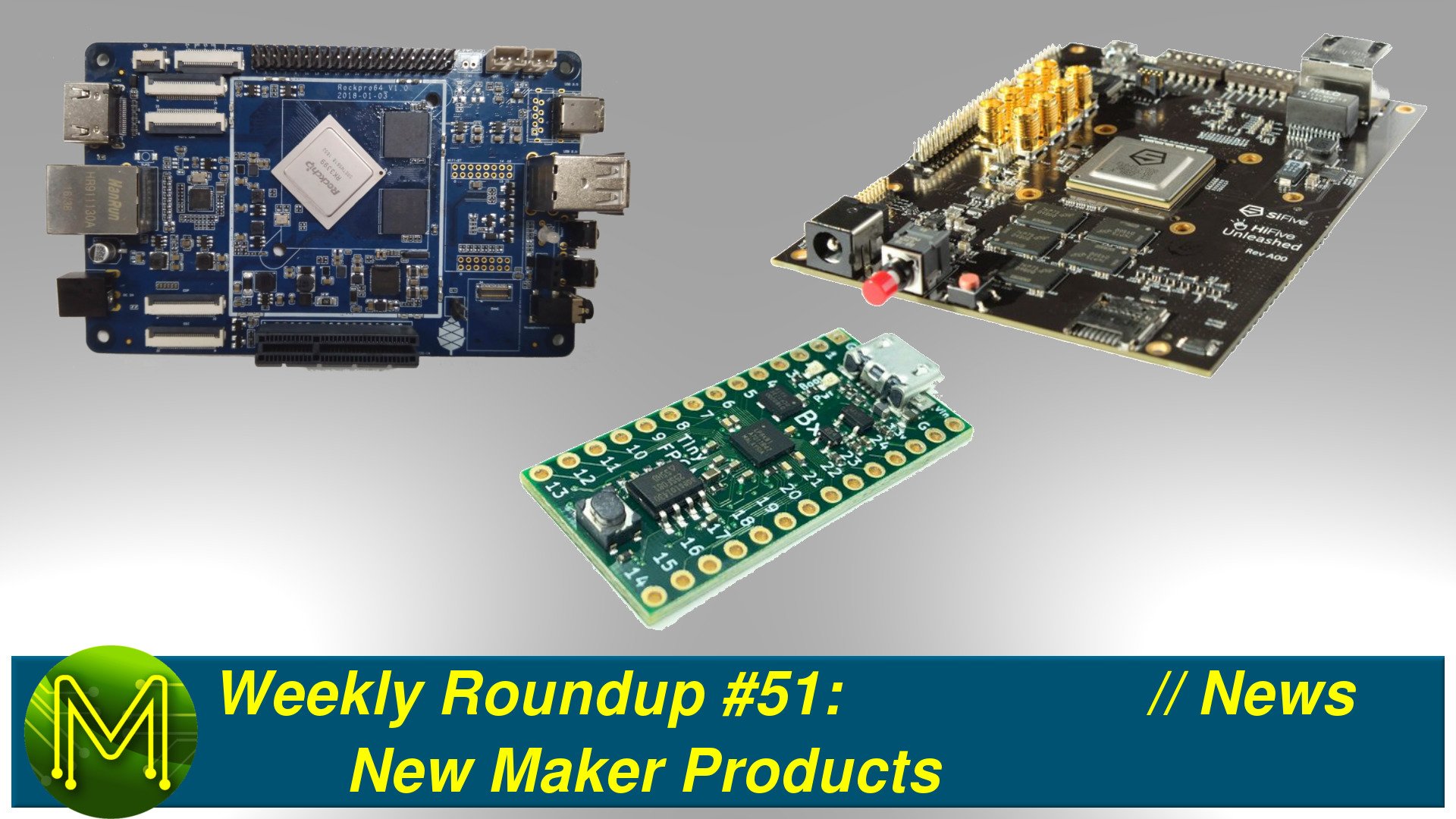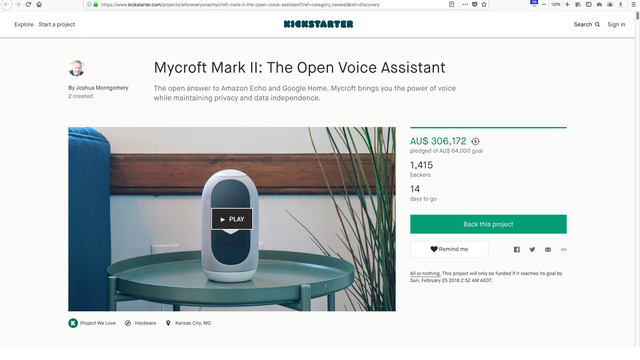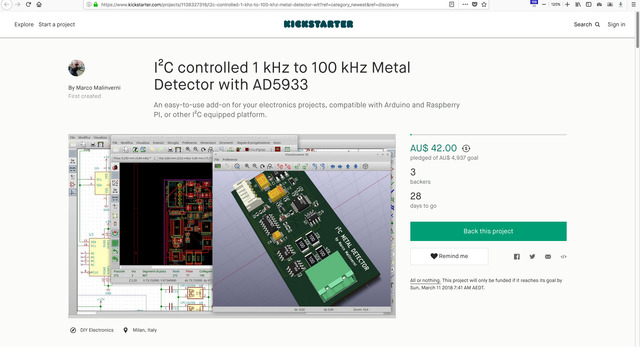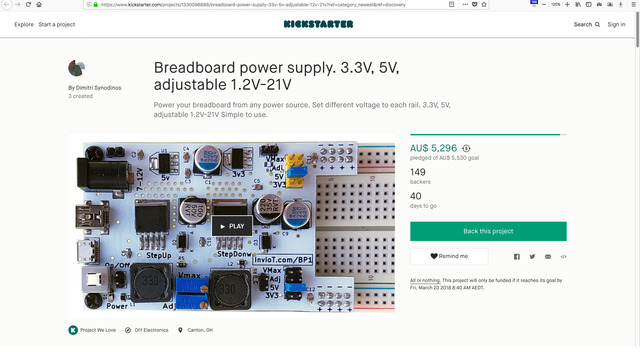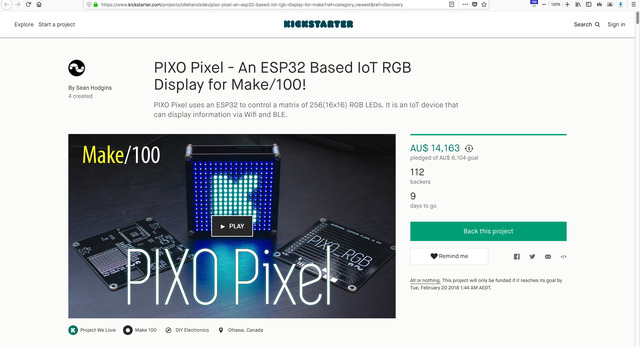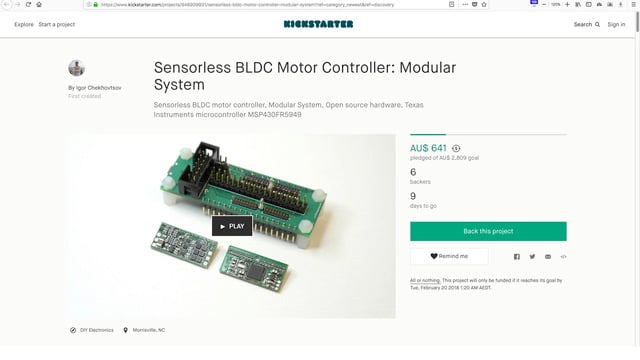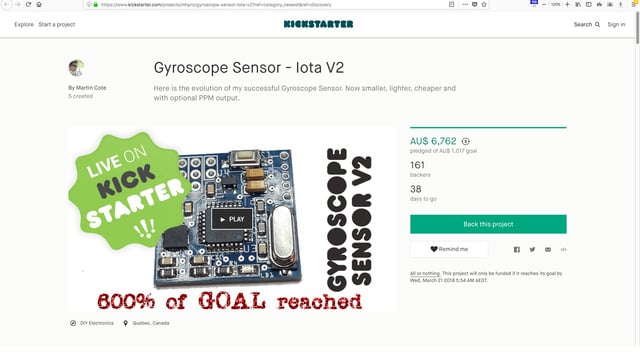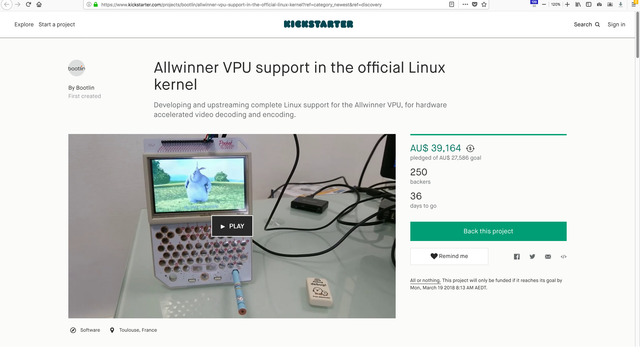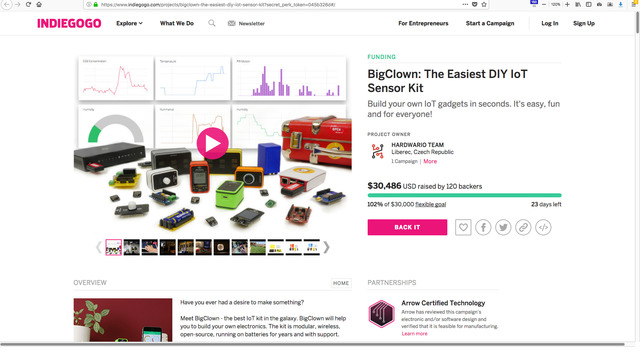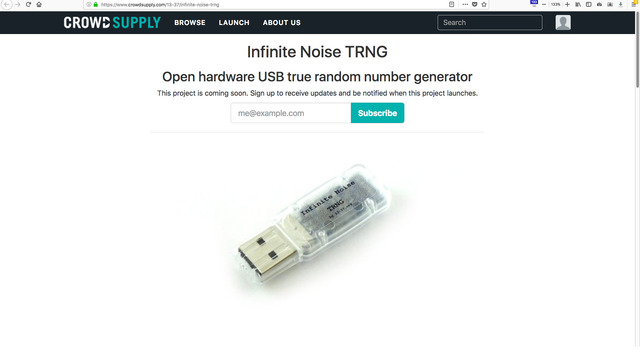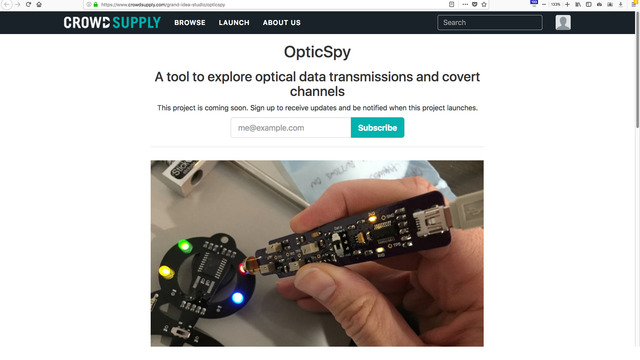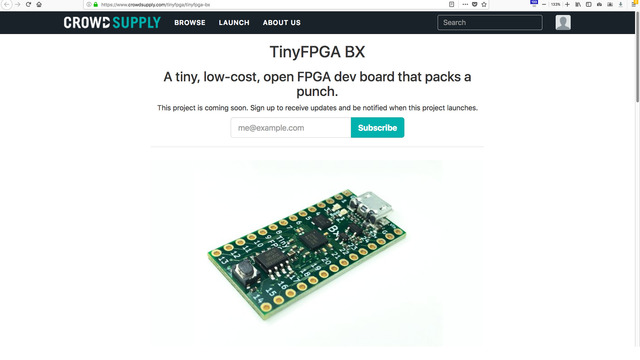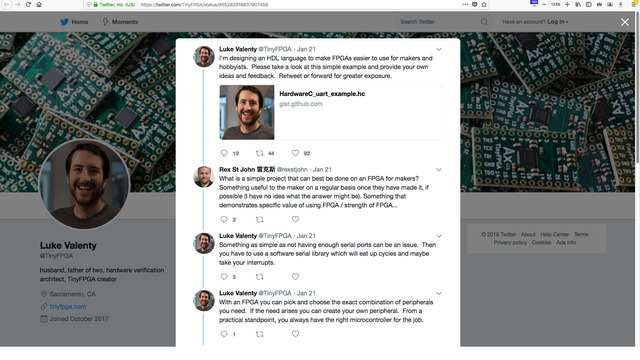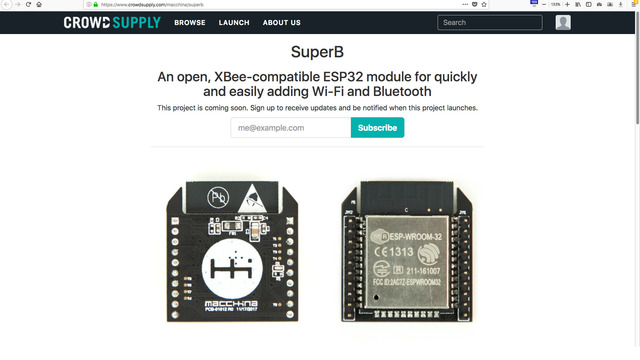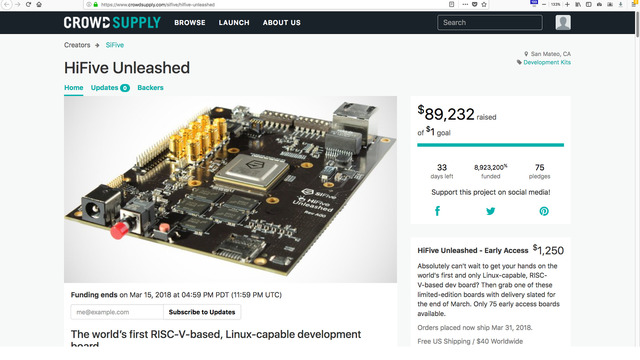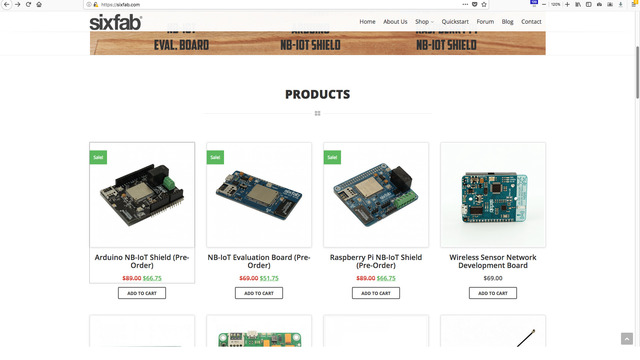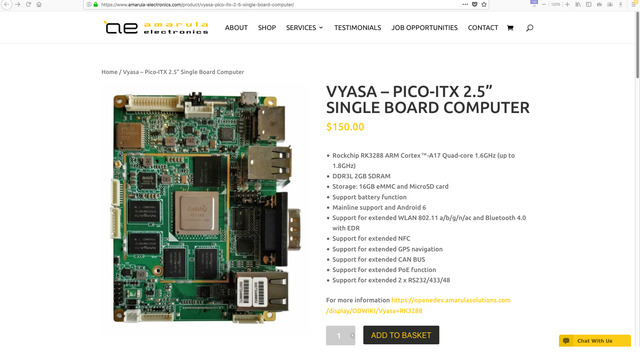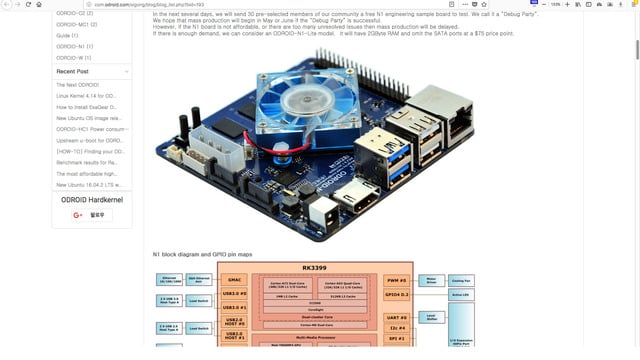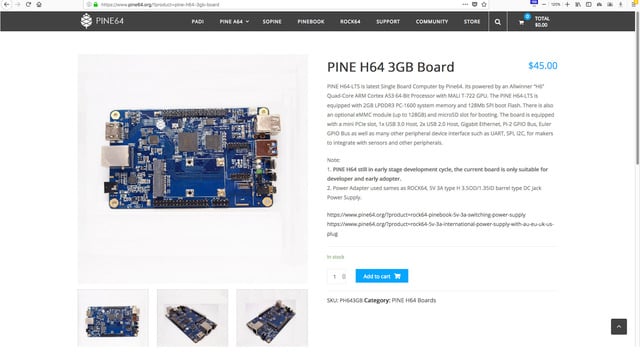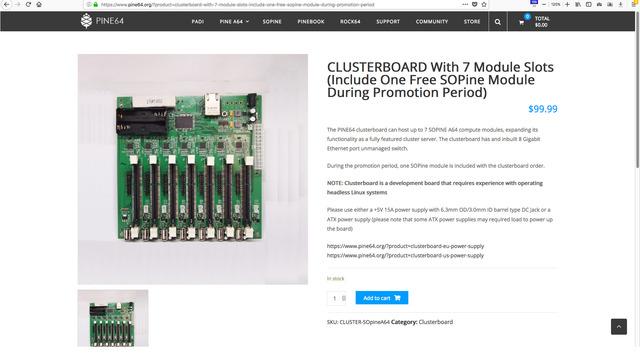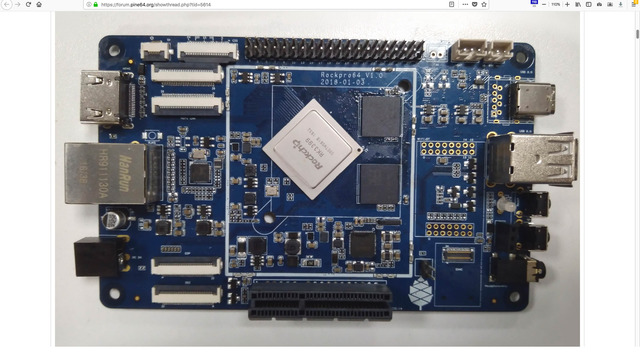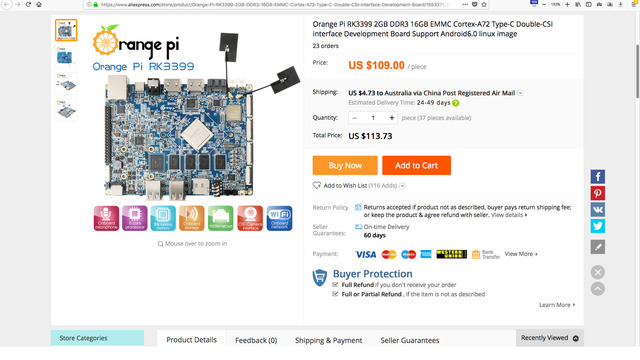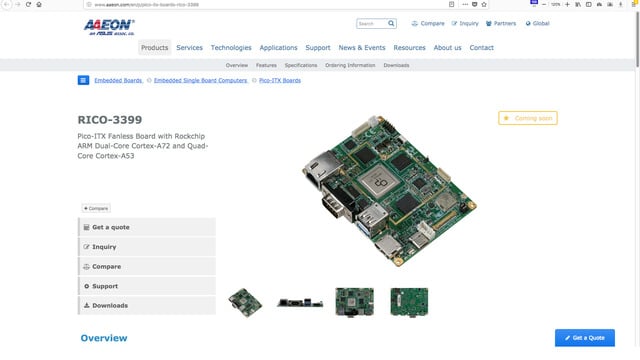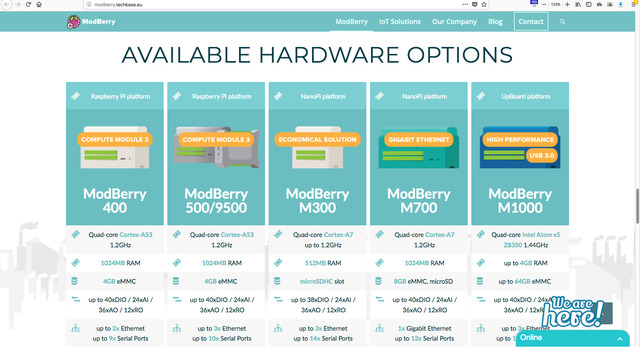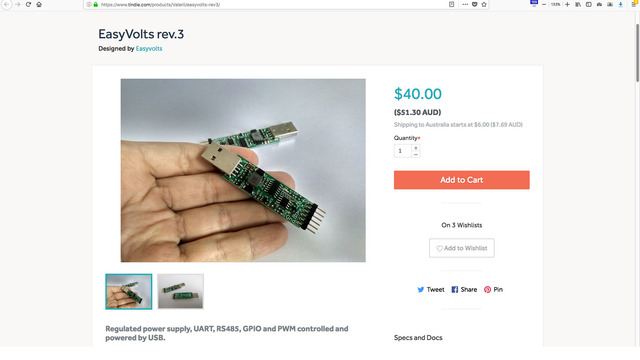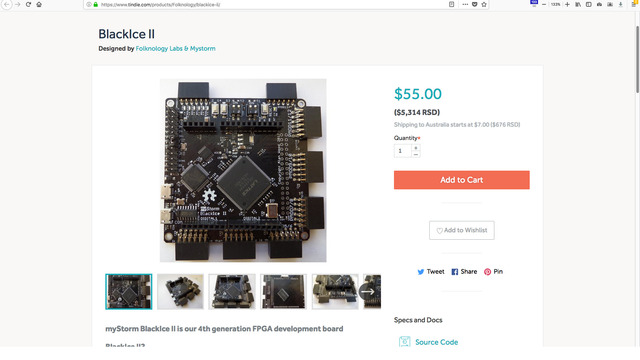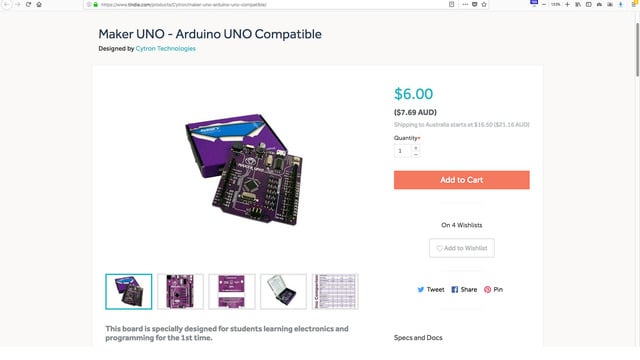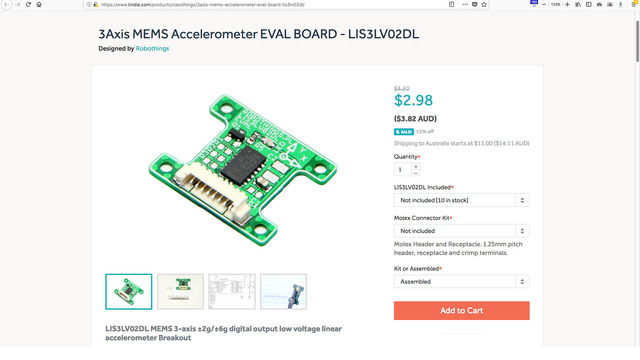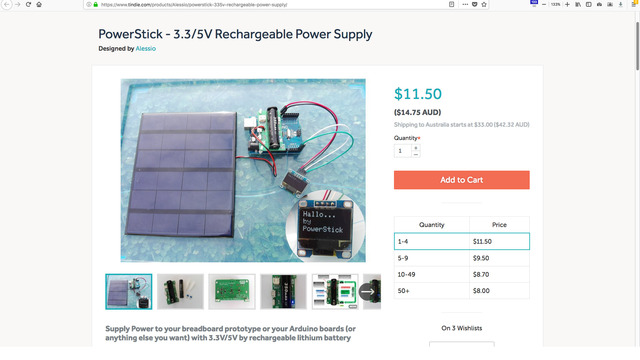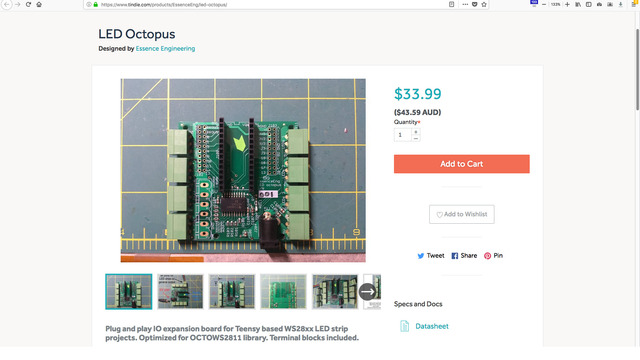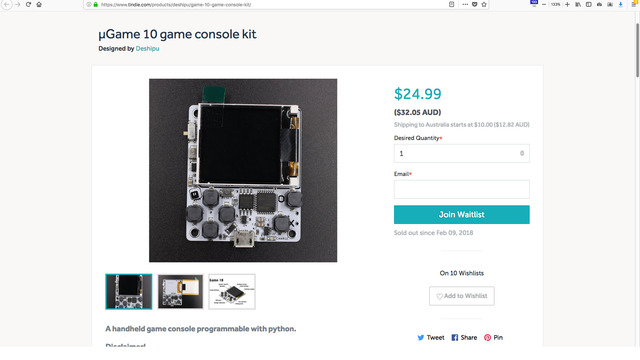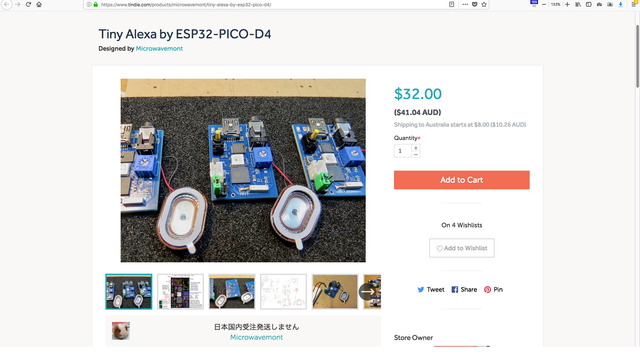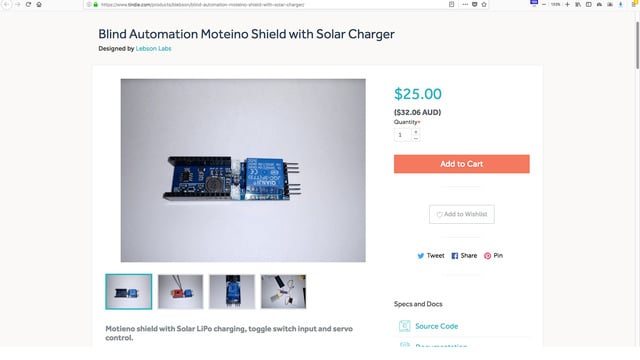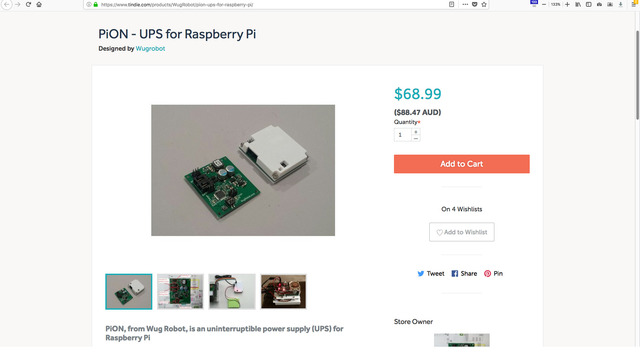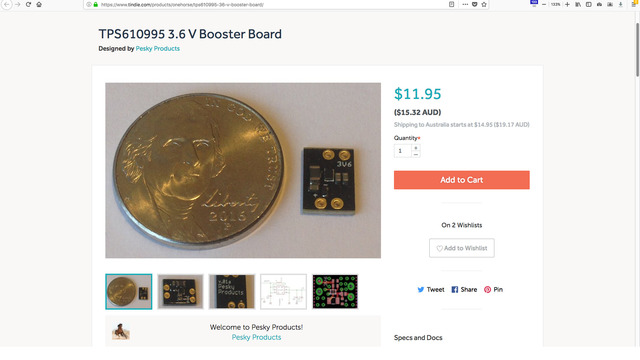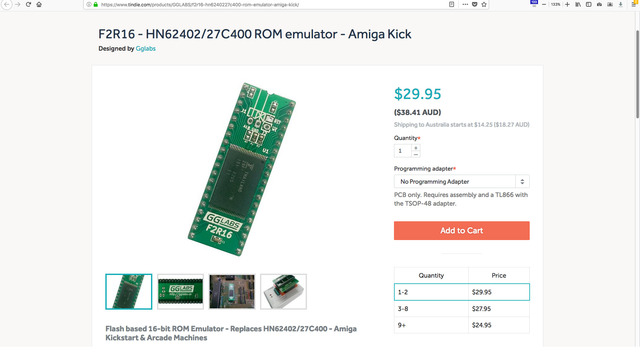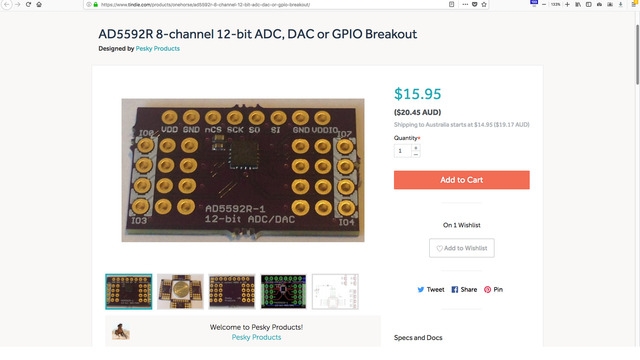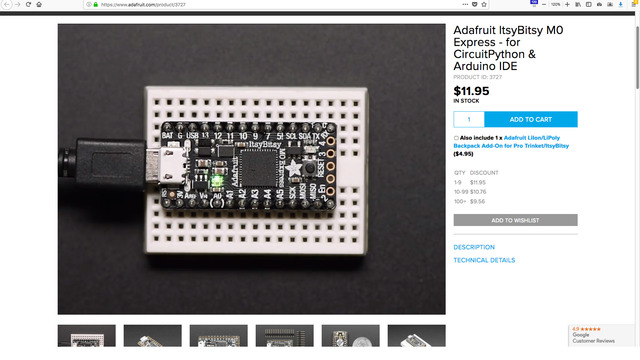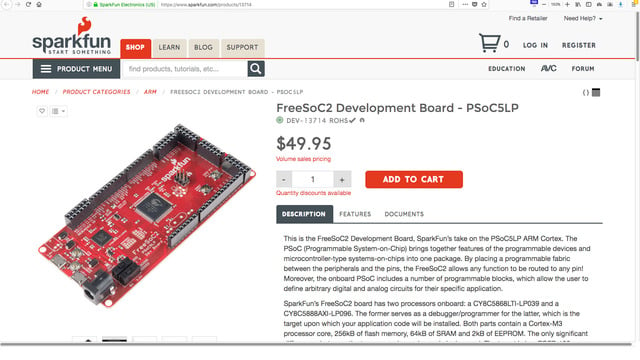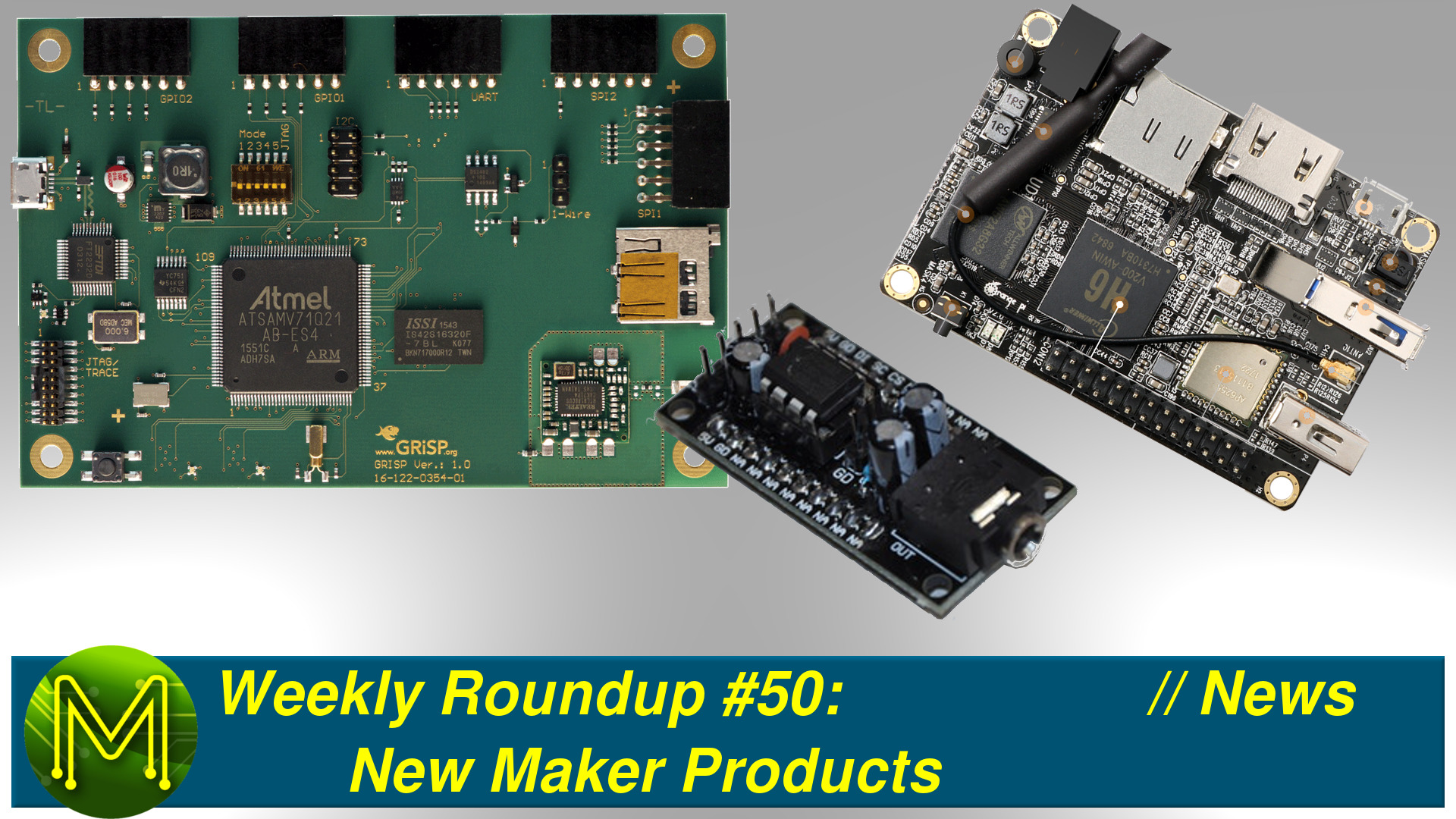Weekly Roundup #51 - New Maker Products // News
In Weekly Roundup #51 we’re taking a look at a bunch of new RK3399 SBCs, FPGAs and the world is still AI mad.
Crowd Funding
KickStarter
This is a fairly lengthy Weekly Roundup, so sit back and put your feet up.
Mycroft Mark II
First up on Kickstarter we have the MyCroft Mark II. The MyCroft is an open source voice assistant which handles all the grunt work on the device itself instead of in the cloud. The Mark II is similar to the Mark I, but now sports a snazzy touch display, SD slot and USB. As yet there’s no indication of what SoC they’re using. I joined the live broadcast to find out, but unfortunately this wasn’t made clear.One of their goals of the product is to be completely open. That is: You have complete control over the device and the persona that responds on MyCroft will send you data only you want to hear. Which can be good and bad.
I²C controlled Metal Detector with AD5933
A couple of smaller boards on Kickstarter…If you’re in to metal detection, then there’s this campaign based on the Analog Devices AD5933 for around 5 euros.
Breadboard power supply
Or yet another breadboard power supply providing 3.3 and 5v rails as well as an adjustable 1.2 to 21v rail from a 7 to 12v DC supply.PIXO Pixel
And as part of the Make/100 initiative, there’s the PIXO Pixel, which has an on-board ESP32 controlling a 16 by 16 RGB LED matrix.Sensorless BLDC Motor Controller
And there’s the Sensorless BLDC motor controller. This is a modular motor controller based on the humble MSP430, and a bunch of MOSFETs allowing control over a 3.3 to 8.4v, 6A motor. Not sure where the “sensorless” bit comes in, as it has a current sensor, but anyway… Looks good.Gyroscope Sensor - Iota V2
Another campaign by Martin Cote, which is an update on his previous IoT motion sensor board. Version 2 has the same hardware as Version 1, but is much smaller and cheaper.Allwinner VPU Linux support
This is an interesting campaign that has been created by Bootlin. A little research shows up that this is the new company name for the defunct Free Electrons. So, what do they want to do in this campaign? They want to free up the AllWinner SoCs completely from all those pesky closed source binary blobs and provide true support for all the AllWinner VPU.If they can pull this off, then suddenly all those cheap AllWinner based boards from fruit shops suddenly become a whole more attractive.
IndieGoGo
Over at IndieGoGo, there’s the …
BigClown
BigClown IoT sensor kit. This kit starts with the “Core” running an STM32 with sub-GHz RF, temperature and 3DOF IMU. They also have the Cloony, no not him, but this, which is the same but smaller. From that you can build up with a variety of modules that provide every sensor you can think of, with their starter kit all the way up to their Premium Kit.We’ve seen a lot of these in the past, but the ones that end up being good are the ones that provide a full end to end product making it easy for you to get on-board. BigClown have offered me a review unit, so I’ll be putting it through it’s paces when I get it.
Crowd Supply
Over at CrowdSupply, there’s a few interesting things in pre-launch…
Infinite Noise TRNG
The Infinite Noise TRNG aims to provide true random number generation. Why is this important? A lot of crypto engines rely very heavily on random number generation and computers are very good at being predictable. So a decent TRNG source is critical for security. This board is similar to Peter Allen’s design from back in 1999, so it’s been around for a while. You can also pick this up from Tindie.OpticSpy
Back in my youth, when I was writing firmware for production test environments, I would often use LEDs to send 300 BAUD data indicating any errors encountered. A simple Light Dependent Resistor and RS232 circuit attached to my PC would show up what was being sent. The OpticSpy is doing pretty much that, but this one is claiming to get up to 800kbps.TinyFPGA BX
TinyFPGA BX is yet another fantastic FPGA board from Luke Valenty. This one is based on the Lattice ICE40LP8K. There’s not much to say about this one, except Luke is continually producing some decent and inexpensive Maker products.FPGA HDL
While we’re on the topic of Luke, he tweeted the other day that he is designing a Hardware Description Language to make it easier for Makers to work with FPGAs. This is a fantastic idea and I’m looking forward to seeing this develop over time.SuperB
The SuperB is simply an ESP32 SoC in an XBee form factor. I’m surprised it’s taken this long for someone to make one.HiFive Unleashed
SiFive is back again with yet another cool product. This time there’s the HiFive Unleashed. The unleashed part comes from, I suspect, the fact that it runs the SiFive U540, which is a quad core SoC running at 1.5GHz. Also has 8G DDR4 RAM with ECC, 32M SPI flash, SD, GbE, FMC expansion header all powered from a 12v DC supply.This board is a bit of a screamer and unfortunately has the price tag to match. However, it is the first Maker SBC that I’ve seen providing DDR4 ECC RAM.
Honorable mentions
SixFab NB-IoT Evaluation Board
This next one was mentioned by CNX software:Over at SixFab they have a couple of new IoT boards on pre-order.
The NB-IoT is an Arduino shield running the Quectel BC95-B20, 3DOF IMU, temperature, humidity and light sensors.
While the Raspberry Pi hat is exactly the same, except for an additional 4 channel 12bit ADC and mains rated relay.
Amarula Electronics Vyasa
The unusually named, and something that I’ll probably mispronounce, Vyasa is yet another SBC based on the RK3288. For US$150 you also get 2G DDR3 RAM, 16G eMMC, SD, GbE, USB, HDMI out and LiPo battery management. There’s also a header allowing expansions for NFC, GPS, Can BUS, WiFi, Bluetooth and even Power over Ethernet.Hardkernel ODROID-N1
Over at the Hard Kernel blog, they announced the next ODROID SBC. The ODROID-N1 will be based on the RK3399 hex-core SoC with 4G DDR3 RAM, USB3.0, USB2.0, GbE, the typical Pi GPIO header, HDMI 2.0 supporting 4K, eMMC and even two SATA3 ports. Two! Nice! Not only that, but their price point comes in at US$110. If they can pull that off, this is going to be one heck of a board.Pine H64
Not to be outdone, the Pine64 guys have been working hard and have released three new boards.The first is the Pine H64, which is based on the AllWinner H6 SoC and comes in 1, 2 or 3 G DDR3 RAM, 128Mb SPI flash, SD, eMMC, HDMI 2.0 supporting 4K, GbE, USB 3.0, USB 2.0, 40 Pi GPIOs, an additional Euler GPIO header and a mini PCIe slot.
How much for this board? The 1G will set you back US$26, the 2G US$36 and the 3G US$45. Wow!
Pine64 Clusterboard
Then there’s the Pine64 Clusterboard, which has 7 slots supporting 7 SOPine modules. It also gives you GbE with on-board switch, 7 USB2.0 ports, GPIO expansion header and RTC, all powered from a 5v, 15A DC supply coming from a standard PC ATX power connector.Their current promotion allows you to pick up a free SOPine module.
Pine64 RockPro64
Then there’s the upcoming RockPro64 based on the ineffable RK3399 SoC. It’ll come in various flavours with different RAM and eMMC sizes, GbE, USB2.0, USB Type C and a real PCIe slot.One of the other most noticeable features of the board is the number of MIPI headers; which gives you 3 CSI ports as well as DSI and eDP.
Orange Pi RK3399
Orange Pi doesn’t really want to be left out of the party and have come out with their version of the RK3399 SBC. For US$109 you can pick up an SBC with a bucket load of goodies like 2G DDR3 RAM, 16G eMMC, GbE, SD, USB2.0, MIPI-CSI, two MIPI-DSI, 40 pin GPIO, 9DOF IMU, HDMI and it starts to get really cool with HDMI in, mSATA and MIC array.That’s a lot for a little.
Aaeon RICO-3399
And yes the RK3399 party continues with another board from Aaeon in the coming soon category. This one has 2G DDR3 RAM, 16G eMMC, HDMI & eDP out, GbE, all the USB types you can think of, mPCIe slot, RTC and LiPo battery management.ModBerry M300 IoT Gateway
And someone not interested in joining the RK3399 party is the ModBerry guys. If you’re in to industrial projects, then these guys will provide an industrial case with add-ons and cloud offering based on several SBCs, such as the UpBoard, NanoPi NEO2 and Orange Pi Zero. They support almost all the wireless protocols as well as CAN, 1-wire and UARTs.Maker Shops
Tindie
Over at Tindie, there’s a bunch of cool things.

